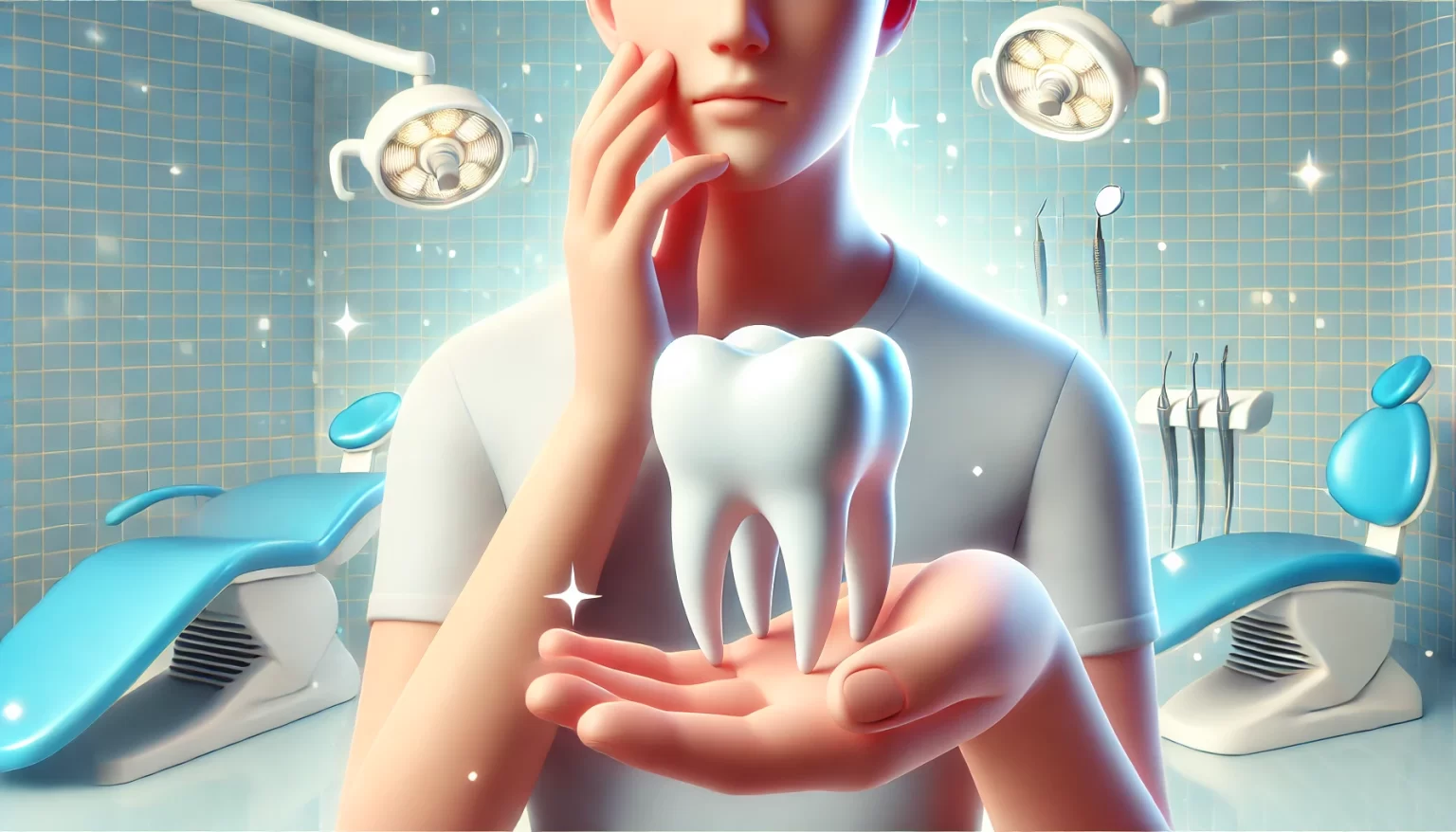Discovering a loose tooth as an adult can be distressing. Unlike children, who eagerly anticipate a visit from the tooth fairy, adults often view a loose tooth with concern, as it can signify underlying dental issues. Addressing this problem promptly is crucial to prevent further complications.
While consulting a dentist is essential for a proper diagnosis and treatment plan, you can employ several home remedies and practices to help stabilize and strengthen a loose tooth. This article provides a comprehensive guide on effective home treatments to manage and potentially remedy a loose tooth.
Causes of a Loose Tooth
Understanding the root causes of a loose tooth is vital for selecting the appropriate treatment. Several factors can contribute to tooth loosening, and addressing these underlying issues is the first step toward finding a solution.
1. Poor Oral Hygiene
One of the primary causes of tooth loss is poor oral hygiene. Neglecting regular brushing and flossing can lead to the buildup of plaque and tartar, which harbor harmful bacteria. Over time, these bacteria can cause gum disease, which weakens the gums and the supporting structures of the teeth, leading to tooth loosening.
2. Gum Disease
Gum disease, or periodontitis, is an infection of the gums that can damage the soft tissue and bone supporting your teeth. This condition often begins with gingivitis, characterized by red, swollen gums that bleed easily.
If left untreated, it can progress to periodontitis, causing the gums to pull away from the teeth, forming pockets that become infected. The body’s immune response to this infection can destroy the bone and connective tissue holding teeth in place, leading to loose teeth and, eventually, tooth loss.
3. Injury or Trauma
A sudden blow to the mouth, whether from a fall, sports injury, or accident, can result in a loose tooth. Even if the tooth remains in place, the impact can damage the surrounding ligaments and tissues, leading to loosening. It’s essential to seek immediate dental attention if you experience a traumatic injury to your mouth, as prompt treatment can prevent further damage.
4. Age-Related Changes
As we age, our teeth and gums undergo natural changes. The gums may recede, exposing more of the tooth and its root, making teeth more susceptible to loosening. Additionally, bone density may decrease with age, weakening the support structure of the teeth. Regular dental check-ups and good oral hygiene can help mitigate these age-related changes.
Home Remedies to Tighten a Loose Tooth
While professional dental care is crucial, you can try several home remedies to help tighten a loose tooth. These remedies can temporarily relieve and support overall oral health, potentially stabilizing a loose tooth.
1. Saltwater Rinse
Saltwater rinses are a simple yet effective remedy for various oral issues. The salt helps to reduce inflammation, promote healing, and fight bacteria in the mouth. To prepare a saltwater rinse, dissolve a teaspoon of salt in warm water. Swish the solution in your mouth for about 30 seconds, then spit it out.
Repeat this process 2-3 times a day, especially after meals. Regular saltwater rinses can help soothe your gums and may tighten a loose tooth by reducing inflammation and bacterial load.
2. Garlic
Garlic is well-known for its potent antimicrobial properties, which can help fight infections that may be causing gum disease and tooth loosening. To use garlic, crush a fresh clove to release its juices, then apply the crushed garlic directly to the affected area.
Leave it on for a few minutes before rinsing your mouth with water. Garlic can be quite strong, so you may experience some burning or discomfort. If it’s too intense, try mixing the garlic with olive oil before applying it.
3. Turmeric and Black Pepper
Turmeric contains curcumin, a compound with powerful anti-inflammatory and antibacterial properties. When combined with black pepper, it can be even more effective due to the piperine in black pepper, which enhances the absorption of curcumin.
To make a paste, mix equal parts turmeric powder and black pepper and add enough water. Apply the paste to your gums and the loose tooth, leaving it on for a few minutes before rinsing thoroughly with water. This paste can help reduce inflammation and bacterial activity in your mouth, promoting gum health and potentially helping to stabilize a loose tooth.
4. Oil Pulling
Oil pulling is an ancient Ayurvedic practice that involves swishing oil in your mouth to remove toxins and improve oral health. Coconut oil is often recommended due to its antibacterial properties. To perform oil pulling, place a tablespoon of coconut oil in your mouth and swish it for 10-20 minutes, making sure not to swallow the oil.
After swishing, spit the oil into a trash can (not the sink, as it can clog pipes), rinse your mouth with warm water, and brush your teeth. Regular oil pulling can help reduce plaque and gingivitis, contributing to the overall health of your gums and teeth.
5. Aloe Vera
Aloe vera is known for its soothing and healing properties. It can help reduce gum inflammation and promote the healing of any infections or injuries. To use aloe vera, extract fresh gel from an aloe vera leaf and apply the gel directly to the gums and the loose tooth. Leave it on for a few minutes before rinsing with water. Using aloe vera can provide relief from pain and swelling, helping to create a healthier environment for your gums and teeth.
Dietary Recommendations
Your diet plays a significant role in maintaining oral health. Consuming the right foods and avoiding harmful ones can help strengthen your teeth and gums, contributing to their overall stability.
1. Foods to Eat
Incorporate calcium-rich foods into your diet to maintain strong teeth and bones. Examples include milk, cheese, yogurt, almonds, and leafy greens. Calcium is crucial for dental health as it helps to strengthen the tooth enamel and the jawbone.
Vitamin C-rich foods are also essential for healthy gums and preventing gum disease. Citrus fruits, strawberries, bell peppers, and broccoli are excellent sources of vitamin C, which promotes collagen production and helps repair damaged tissues.
Leafy greens like spinach, kale, and Swiss chard are packed with vitamins and minerals that support oral health. They contain folic acid, which can help reduce gum inflammation and improve gum health.
2. Foods to Avoid
Avoid sugary snacks like candy, cookies, and soda to protect your teeth and gums. Sugar feeds harmful bacteria in the mouth, leading to plaque buildup and gum disease.
Acidic foods, such as citrus fruits, tomatoes, and vinegar, can erode tooth enamel, making teeth more susceptible to decay and loosening. While these foods can be part of a healthy diet, consume them in moderation and rinse your mouth with water afterward.
Hard and crunchy foods, including hard candies, ice, and popcorn kernels, can damage teeth, especially if they are already loose. Avoid these foods to prevent further injury.
3. Oral Hygiene Tips
Maintaining impeccable oral hygiene is crucial for preventing and managing a loose tooth. Here are some essential tips to keep your teeth and gums healthy:
4. Proper Brushing Technique
Using the right brushing technique can significantly improve your oral health. Choose a soft-bristled toothbrush to avoid damaging your gums. Hold your toothbrush at a 45-degree angle to your gums and brush in gentle, circular motions. Ensure you brush all surfaces of your teeth, including the front, back, and chewing surfaces. Brush for at least two minutes twice a day.
5. Flossing Regularly
Flossing is essential for removing plaque and food particles from between your teeth, areas that your toothbrush can’t reach. Use about 18 inches of dental floss and wind most of it around your middle fingers, leaving about an inch or two to work with.
Hold the floss tightly between your thumbs and forefingers and gently insert it between your teeth, using a gentle sawing motion. Curve the floss around each tooth and slide it up and down along the tooth and under the gumline. Use a clean section of floss for each tooth.
6. Using Mouthwash
Mouthwash can help reduce plaque and bacteria in your mouth, promoting healthier gums and teeth. Choose an antibacterial mouthwash and pour the recommended amount into a cup. Swish it around in your mouth for about 30 seconds, then spit it out. Avoid eating or drinking for at least 30 minutes to allow the mouthwash to work effectively.
When to Seek Professional Help?
While home remedies can provide temporary relief and aid in minor issues, it’s essential to recognize when professional dental care is necessary. If you experience persistent or worsening pain, increased swelling or redness, pus or discharge from the gums, or looseness that doesn’t improve after a few days, it’s crucial to seek professional help. A dentist can provide a more accurate diagnosis and appropriate treatment for your condition.
Importance of Professional Dental Intervention
A dentist can perform thorough cleanings, apply medicated rinses, or recommend specific treatments to address the underlying causes of loose teeth. For example, they might suggest scaling and root planing, a deep cleaning method that removes plaque and tartar below the gumline and smooths the tooth roots to promote healing.
Splinting is another technique that involves bonding the loose tooth to adjacent teeth to stabilize it. These professional interventions can provide more substantial and long-lasting results than home remedies alone.
Conclusion
Caring for a loose tooth at home involves a combination of effective home remedies, a proper diet, and excellent oral hygiene practices. While these measures can provide significant relief and improvement, monitoring your condition and seeking professional dental care if necessary is essential. By maintaining good oral hygiene and addressing issues promptly, you can ensure the health and longevity of your teeth.
FAQ
Can a loose tooth tighten back up?
Yes, a loose tooth can tighten back up with proper care and treatment. Home remedies and improved oral hygiene can help, but it’s essential to consult a dentist for persistent issues.
How long does it take for a loose tooth to heal?
The healing time for a loose tooth can vary depending on the cause and severity. With consistent home care and professional treatment, improvement can be seen within a few weeks to a few months.
Are there any risks associated with tightening a loose tooth at home?
While many home remedies are safe, avoiding overly aggressive treatments that can cause further damage is essential. Always consult with a dentist before trying new methods, especially if you have underlying dental issues.
What should I do if my child has a loose tooth?
If your child has a loose tooth, it’s often a natural part of growing up, especially if it’s a baby tooth that’s ready to fall out. Please encourage them to wiggle the tooth gently with their tongue or fingers. If the tooth is causing pain or seems abnormally loose, consult a pediatric dentist for advice.








